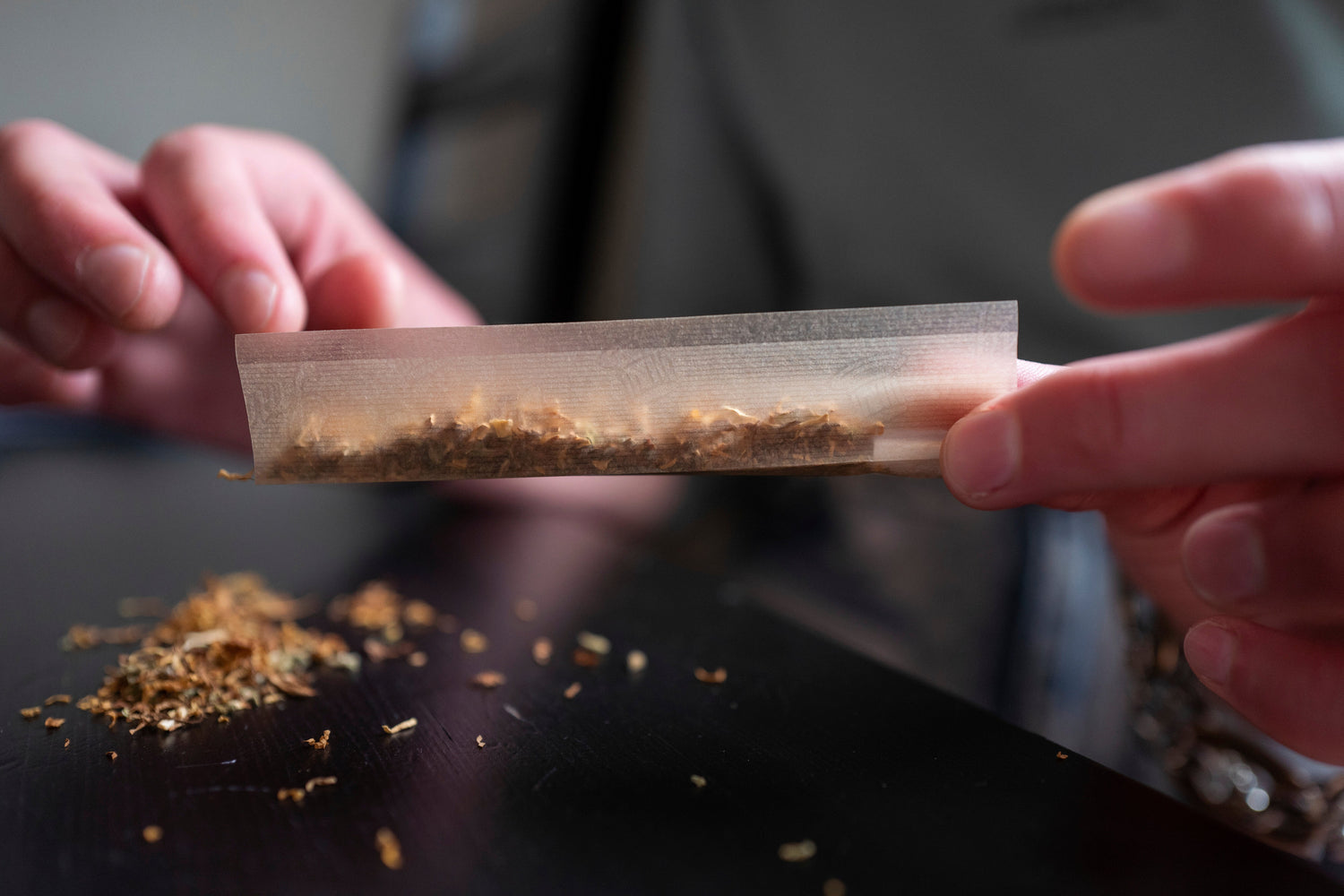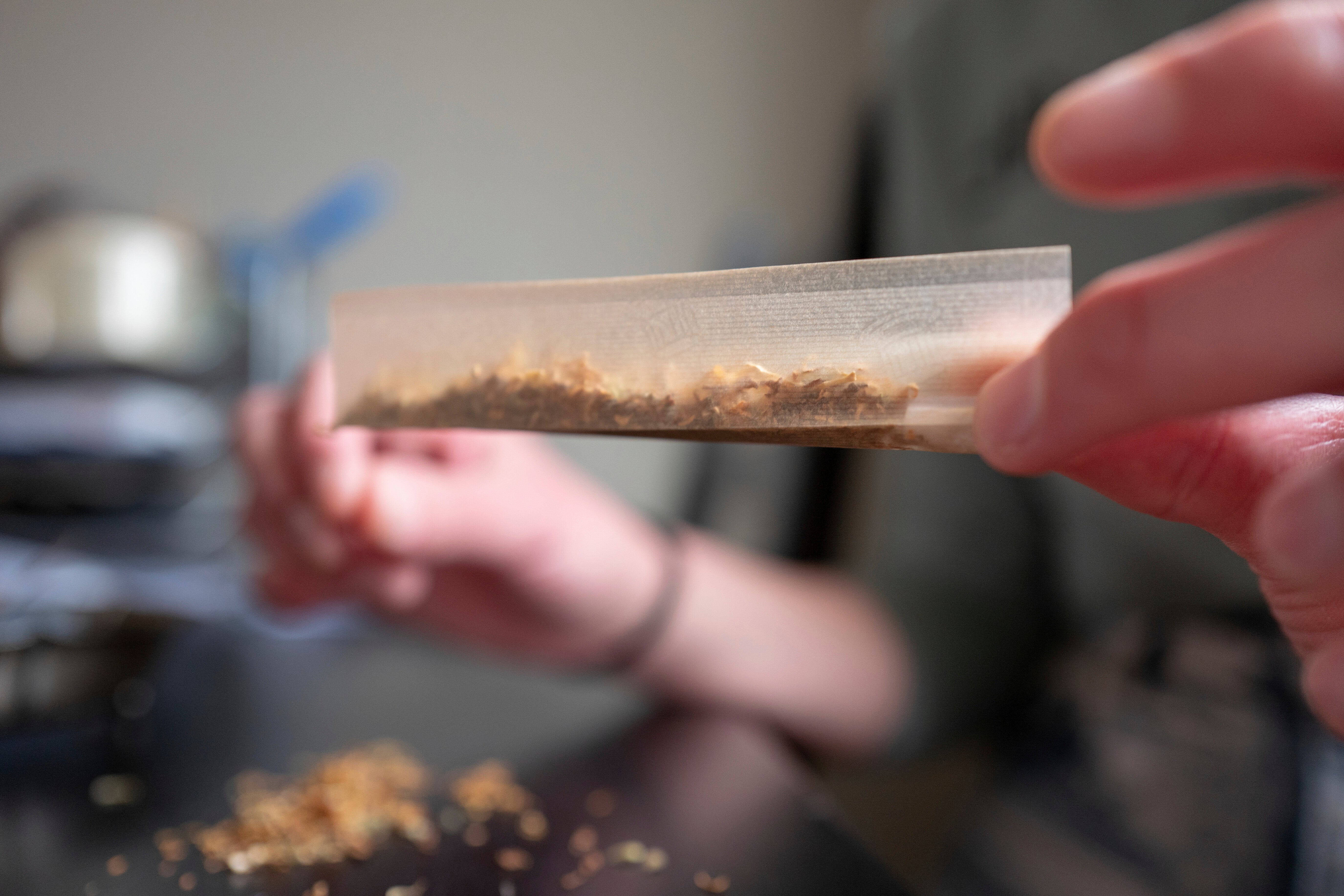Have you ever wondered why some rolling papers provide smooth, flavorful draws while others feel restricted or burn unevenly? The secret lies in understanding how the design of rolling paper impacts airflow. Poor airflow can ruin an otherwise perfect smoking session, leading to harsh hits, wasted material, and frustrating experiences.
Proper airflow is the foundation of a quality smoking experience. It affects everything from flavor preservation and burn consistency to draw comfort and efficiency. This guide covers four key design factors - thickness, materials, surface texture, and manufacturing - plus practical testing methods and troubleshooting solutions.
Understanding Rolling Paper Airflow Basics
Airflow in rolling papers depends on two main factors: porosity (microscopic gaps in the paper) and draw resistance (how much effort it takes to pull air through). These factors determine combustion quality, flavor delivery, and smoking comfort.
The goal is to find papers that provide enough airflow for complete combustion without burning too rapidly or creating harsh hits.
What is Paper Porosity and Why It Matters
Paper porosity refers to the tiny microscopic gaps and openings within the paper fibers that allow air to pass through. These invisible channels are created during the manufacturing process and determine how much air can flow through the paper during smoking.
Optimal porosity ensures adequate oxygen for clean combustion while preventing excessive airflow that causes rapid burning. Papers with proper porosity create smooth draws and even burns, while poorly designed papers cause restricted airflow or uncontrolled burning.
The Science of Combustion and Optimal Oxygen Ratios
Understanding the chemistry behind combustion reveals why specific airflow characteristics improve smoking quality and how different oxygen levels affect the burning process.
Combustion Temperature and Airflow
Optimal combustion occurs at temperatures between 400 °C and 500°C (752°F and 932°F). Proper airflow maintains this temperature range by providing adequate oxygen while preventing excessive heat that creates harsh compounds. Papers with controlled porosity regulate oxygen supply, keeping combustion within the ideal temperature zone.
When temperatures exceed this range due to excessive airflow, the heat destroys delicate flavor compounds and creates acrid smoke. Insufficient airflow results in temperatures that drop below optimal levels, leading to incomplete combustion and the production of harsh byproducts.
Oxygen-to-Fuel Ratios and Chemical Reactions
Complete combustion requires specific oxygen ratios for efficient chemical reactions. Too little oxygen creates incomplete combustion, producing carbon monoxide and other harsh compounds that create throat irritation and unpleasant taste. Excessive oxygen causes rapid burning and high temperatures that destroy desired flavor compounds before they can be enjoyed.
Papers with optimal porosity maintain oxygen ratios that promote clean, complete combustion. When oxygen supply is adequate, combustion produces primarily carbon dioxide and water vapor, with minimal carbon monoxide or partially burned particles that create harshness.
Heat Distribution and Particle Interaction
Even airflow distributes heat uniformly throughout the burning material, preventing hot spots that create acrid smoke and ensuring consistent activation of flavor compounds. Papers with uniform porosity create predictable heat distribution patterns that maintain optimal combustion throughout the session.
Different grind sizes interact differently with airflow. Finer materials need more controlled airflow to prevent rapid burning, while coarser materials benefit from higher porosity to ensure complete combustion of all particles. Understanding these relationships helps match papers to specific material preparations.
Key Design Factors That Control Airflow
Four design elements determine airflow performance: paper thickness, material composition, surface texture, and manufacturing processes. Here's how each affects your smoking experience.
Paper Thickness: Thin vs. Standard vs. Thick
Paper thickness directly correlates with airflow capacity and burn characteristics.
Ultra-thin papers (0.1mm) offer maximum airflow due to minimal material density, allowing for smooth draws and clean flavor profiles. However, they require more careful handling and rolling techniques due to their fragility. These papers burn quickly and provide minimal interference with the natural flavors of your material.
Standard thickness papers (0.12-0.13mm) strike a balance between airflow and durability. They're forgiving for beginners while still providing good air passage and reasonable burn rates. Most smokers find that standard papers offer the best combination of performance and ease of use.
Thick papers (0.15mm+) provide maximum durability and slower burn rates but restrict airflow more than thinner alternatives. They're ideal for beginners or those who prefer longer, more leisurely sessions. The trade-off is potentially reduced flavor clarity and slightly more restricted draws.
Material Composition and Fiber Structure
Different materials exhibit varying airflow characteristics due to their natural fiber structure and density.
Hemp papers provide excellent natural porosity due to their long, strong fibers. The fiber structure creates consistent micro-channels for airflow while maintaining durability. Hemp papers typically offer medium airflow with good burn consistency and minimal flavor interference.
Rice papers are naturally less porous, resulting in slower burns and more controlled airflow. They're prized for their clean taste and ultra-thin construction. While airflow may be slightly restricted compared to hemp, rice papers excel in flavor preservation and smooth burning characteristics.
Wood pulp papers often have the highest natural porosity, allowing for excellent airflow and faster burn rates. They're typically the most affordable option and provide reliable performance, although they may have a slight paper taste compared to hemp or rice alternatives.
Surface Texture and Manufacturing Effects
Surface treatments and manufacturing processes significantly influence airflow by creating or eliminating micro-channels in the paper structure. Embossed patterns, watermarks, and pressing techniques all affect how air moves through the finished product.
Textured surfaces with subtle patterns can enhance airflow by creating additional pathways for air movement. These micro-channels prevent the paper from adhering too tightly to the contents while maintaining structural integrity.
Manufacturing processes like calendering (pressing and smoothing) can reduce natural porosity by compressing fibers. Chemical treatments during production can also alter the paper's natural airflow characteristics, sometimes improving consistency but potentially reducing overall porosity.
How Airflow Impacts Your Smoking Experience
Proper airflow creates three key benefits: complete combustion for clean flavor, even burning to prevent waste, and comfortable draw resistance.
Flavor and Burn Quality
Optimal airflow enhances flavor by ensuring complete and even combustion of your smoking material. When air moves freely through the paper, it provides the oxygen necessary for clean burning, which releases the full spectrum of flavors without harsh or acrid notes.
Restricted airflow often leads to incomplete combustion, creating harsh smoke and muted flavors. The lack of oxygen causes the material to smolder rather than burn cleanly, producing unpleasant compounds that mask the natural taste profile.
Even burn quality depends heavily on consistent airflow throughout the rolled product. Papers with uniform porosity promote steady combustion from end to end, preventing issues like canoeing (uneven burning on one side) or constant relighting. Good airflow also prevents hot spots that can create harsh hits or waste material.
Draw Resistance and Comfort
The ideal draw resistance allows comfortable pulls without excessive effort while delivering adequate smoke volume. Too little resistance causes rapid burning and weak hits, while too much resistance strains your lungs and reduces enjoyment.
Papers with consistent airflow characteristics provide predictable draw resistance throughout the session, allowing you to establish a comfortable rhythm without constant adjustments.
Choosing Papers for Optimal Airflow
Match paper characteristics to your skill level and smoking preferences using these specific criteria.
Selection Criteria for Different Users
Beginners: Choose standard thickness hemp or wood pulp papers. These provide moderate airflow with forgiveness for inconsistent rolling technique. Look for papers that maintain performance despite variations in packing density and rolling tightness.
Experienced users: Experiment with ultra-thin papers for maximum flavor clarity or rice papers for clean taste. Advanced users can match specific porosity levels to different materials and session types.
Matching Papers to Your Smoking Style
Flavor-focused smokers: Use ultra-thin rice or hemp papers with higher porosity for complete combustion and minimal paper interference.
Efficiency-minded smokers: Select slightly thicker papers or moderate porosity options that extend session length while maintaining good flavor.
Social smokers: Choose standard thickness papers with reliable airflow that maintain performance when passed between multiple people.
Material-Specific Pairing Guidelines
Different smoking materials have unique airflow requirements based on their density, moisture content, and combustion characteristics. Matching papers to specific materials optimizes both flavor and burning performance.
Dense, Finely Ground Materials
Materials with fine, dense consistency require papers with controlled porosity to prevent rapid burning. Rice papers or hemp papers with moderate porosity work best, providing adequate oxygen without causing flash burning. These materials pack more densely, so slightly higher porosity helps maintain airflow through the compressed material.
The key is balancing oxygen supply with burn control. Fine materials expose more surface area to oxygen, making them more combustible. Papers with excessive porosity cause these materials to burn too quickly, wasting product and creating harsh hits from rapid combustion.
Coarse, Loose Materials
Coarser materials with more air gaps benefit from papers with higher natural porosity. Wood pulp papers or hemp papers with enhanced porosity ensure adequate oxygen reaches all material surfaces for complete combustion. The natural air gaps in coarse materials require additional airflow support from the paper.
Without adequate airflow, coarse materials may burn unevenly, leaving uncombusted portions that create waste and inconsistent flavor delivery. Higher porosity papers help overcome the airflow resistance created by larger particle sizes.
Moisture Content Considerations
High-moisture materials: Fresh or slightly moist materials need papers with excellent airflow to overcome the dampening effect of moisture on combustion. Higher porosity papers help dry the material during initial burning phases while maintaining consistent combustion. Avoid using ultra-thin papers with wet materials, as humidity can compromise the paper's integrity.
Dry, aged materials: Well-cured, dry materials burn more readily and may require papers with controlled airflow to prevent rapid consumption. Rice papers or papers with moderate porosity help regulate burning speed while preserving delicate flavor compounds that can be lost with excessive airflow.
Specialized Material Types
Resinous materials: Materials with high resin content can clog paper pores during burning. Papers with larger pore structures or enhanced porosity maintain airflow even as resin accumulates, allowing for continued airflow even as resin accumulates. Hemp papers with strong fiber structure resist clogging better than more delicate alternatives.
Blended materials: When combining different materials with varying densities and moisture levels, choose papers with moderate to high porosity that accommodate the most restrictive component. This ensures adequate airflow for the entire blend while preventing rapid burning of more combustible elements.
Testing and Optimizing Airflow
Utilize these practical methods to assess paper performance and address common issues.
Simple Home Testing Methods
Light test: Hold paper up to a light source. Good airflow papers show subtle light transmission; overly dense papers appear completely opaque.
Blow test: Place paper over your mouth and breathe lightly through it. Quality papers allow easy air passage without excessive resistance.
Empty cone test: Roll a loose cone made only of paper and draw air through it. This reveals baseline airflow characteristics before adding material.
Comparison test: Test multiple papers side by side to understand the range of airflow characteristics available.
Troubleshooting Common Airflow Issues
Poor draw/restricted airflow: Loosen packing technique or switch to higher porosity papers. Roll less tightly to improve air passage.
Uneven burning: Follow the airflow principles from the burn quality section. Ensure even material distribution and consider papers with more uniform porosity.
Harsh smoke: Address the incomplete combustion factors covered earlier. Use higher porosity papers or adjust the rolling technique to reduce restriction.
Rapid burning: Use slightly tighter rolling or papers with more controlled porosity. Add a filter tip to regulate airflow.
Advanced Tips for Airflow Optimization
Control environmental factors and use advanced techniques to maintain consistent paper performance.
Storage and Environmental Considerations
Humidity control: Store papers in a stable humidity environment. Excessive moisture closes pores and reduces airflow; too little moisture makes papers brittle.
Temperature stability: Avoid extreme temperature changes that can affect paper structure. Store in cool, stable environments.
Proper containers: Use airtight containers with humidity control packets to preserve intended airflow characteristics.
Pre-use conditioning: Consider the smoking environment, as humidity and temperature affect both paper performance and material moisture content.
Conclusion: Maximizing Your Smoking Experience
Paper thickness, material composition, surface texture, and manufacturing quality determine airflow characteristics. Ultra-thin papers maximize airflow and flavor, standard papers balance performance with forgiveness, and thick papers provide durability with controlled burning.
Understanding combustion science helps explain why optimal oxygen ratios create clean, flavorful smoke while poor airflow leads to harsh, incomplete burning. Match your paper selection to both your skill level and your specific materials - fine grinds need controlled airflow while coarse materials require higher porosity.
Store papers in stable humidity and temperature conditions to maintain their designed airflow characteristics over time. With proper understanding and application of these principles, you can consistently achieve optimal smoking experiences tailored to your preferences and materials.





LEAVE A COMMENT
All comments are moderated before being published.
This site is protected by hCaptcha and the hCaptcha Privacy Policy and Terms of Service apply.